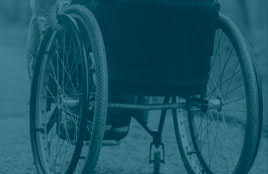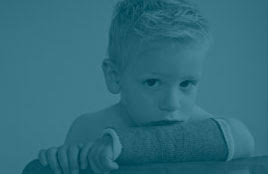Memorial Day has brought the unofficial beginning of the summer season. Schoolchildren begin summer break, families open up the backyard swimming pool, and many vacations involve water. Unfortunately, May has historically signaled the beginning of drowning season across the United States.
Overview
Every day, about ten people die from unintentional drowning. Of these, two are children aged 14 or younger. Drowning ranks fifth among the leading causes of unintentional injury death in the United States.
Who is most at risk?
- Males. Nearly 80% of people who die from drowning are male.
- Children. Children ages 1 to 4 have the highest drowning rates. In 2009, among children 1 to 4 years old who died from an unintentional injury, more than 30% died from drowning. Among children ages 1 to 4, most drownings occur in home swimming pools.
- Minorities. Between 2005 and 2009, the fatal unintentional drowning rate for African Americans was significantly higher than that of whites across all ages. The disparity is widest among children 5-14 years old. The fatal drowning rate of African American children ages 5 to 14 is almost three times that of white children in the same age range.
The main factors that affect drowning risk are:
- Lack of swimming ability. Many adults and children report that they can’t swim. Research has shown that formal swimming lessons can reduce the risk of drowning among children aged 1 to 4 years.
- Lack of barriers. Barriers, such as pool fencing, prevent young children from gaining access to a pool area without supervision.
- Lack of close supervision. Drowning can happen quickly and quietly anywhere there is water (such as bathtubs, swimming pools, buckets), and even in the presence of lifeguards.
- Location. People of different ages drown in different locations. For example, most children ages 1-4 drown in home swimming pools. The percentage of drownings in natural water settings, including lakes, rivers and oceans, increases with age. More than half of fatal and nonfatal drownings among those 15 years and older occurred in natural water settings.
- Failure to wear life jackets. In 2010, the U.S. Coast Guard received reports for 4,604 boating incidents; 3,153 boaters were reported injured, and 672 died. Most boating deaths that occurred during 2010 were caused by drowning, with 88% of victims not wearing life jackets.
- Alcohol use. Among adolescents and adults, alcohol use is involved in up to 70% of deaths associated with water recreation, almost a quarter of ED visits for drowning, and about one in five reported boating deaths.
- Seizure disorders. For persons with seizure disorders, drowning is the most common cause of unintentional injury death, with the bathtub as the site of highest drowning risk.
Tips to help you stay safe in the water:
- Supervise when in or around water. Designate a responsible adult to watch young children while in the bath and all children swimming or playing in or around water. Supervisors of preschool children should provide “touch supervision”, be close enough to reach the child at all times. Because drowning occurs quickly and quietly, adults should not be involved in any other distracting activity (such as reading, playing cards, talking on the phone, or mowing the lawn) while supervising children, even if lifeguards are present.
- Most drownings in the home happen in the bathroom. Parents with young kids should always keep the bathroom door shut. Placing a safety cover over the door knob will help prevent kids from opening the door.
- An adult, not an older sibling, must watch infants and young children in the bathtub at all times. Children can drown in the time it takes to answer the phone.
- Some parents think that using a baby bath seat will keep their child safe, but baby bath seats do NOT prevent drowning.
- Parents should remember to always keep the lid of the toilet down. If there are young children in the house, put a toilet lock on the lid.
- Always remember to drain the bathtub immediately after using it.
- Use the Buddy System. Always swim with a buddy. Select swimming sites that have lifeguards when possible.
- Seizure Disorder Safety. If you or a family member has a seizure disorder, provide one-on-one supervision around water, including swimming pools. Consider taking showers rather than using a bath tub for bathing. Wear life jackets when boating.
- Learn to swim. Swimming lessons can protect young children from drowning. However, even when children have had formal swimming lessons, constant, careful supervision when children are in the water, and barriers, such as pool fencing to prevent unsupervised access, are still important.
- Learn Cardiopulmonary Resuscitation (CPR). In the time it takes for paramedics to arrive, your CPR skills could save someone’s life.
- Air-filled or foam toys are not safety devices. Don’t use air-filled or foam toys, such as “water wings”, “noodles”, or inner-tubes, instead of life jackets. These toys are not life jackets and are not designed to keep swimmers safe.
- Avoid alcohol. Avoid drinking alcohol before or during swimming, boating, or water skiing. Do not drink alcohol while supervising children.
- Don’t let swimmers hyperventilate before swimming underwater or try to hold their breath for long periods of time. This can cause them to pass out (sometimes called “shallow water blackout”) and drown.
Some of these suggestions may seem like ‘overkill’, but with drowning as the third leading cause of death among children, caution is the way to go.






